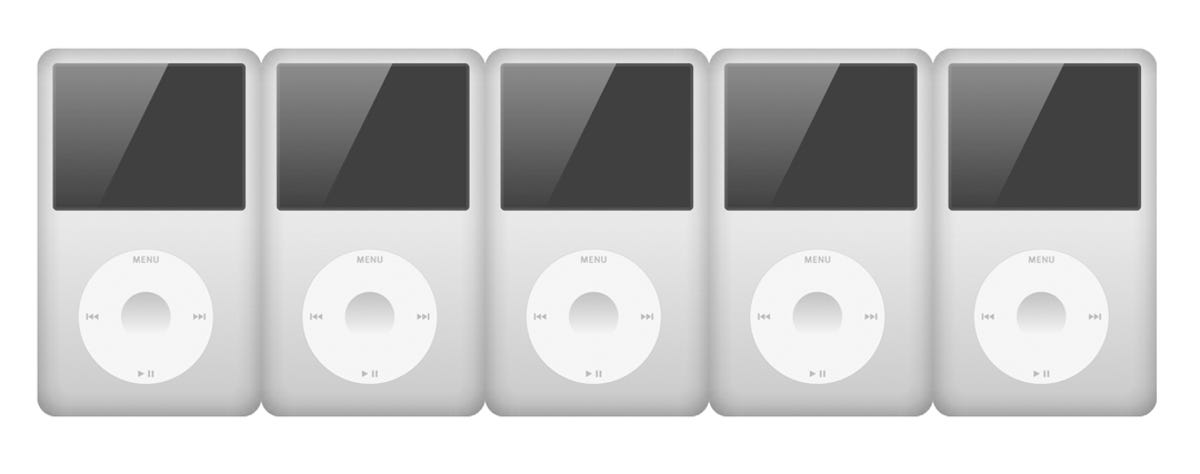
Apple
Some might feel Apple peaked with the original Apple IIe, or maybe the iPhone, or the MacBook. For me, it’s the iPod Classic.
There’s no debate that the iPod and iTunes transformed the way millions of people listen to music and upturned the music industry’s distribution patterns. The first-gen iPod debuted in 2001 and so much has changed over the course of the ensuing 13 years, but the iPod Classic is still in the line for a number of good reasons.
For starters, its 160GB hard drive makes the Classic easily the largest capacity music player for the money. If you want to carry thousands of lossless music files or up to 200 hours of video in your pocket, the Classic can’t be beat. A 64GB iPod Touch costs a wee bit more, and it kills the iPod on features and apps, but for playing music, I’ll stick with the Classic, thank you very much.
Some critics point to the Classic’s hard drive as a throwback, but my five-year-old Classic’s drive hasn’t given me a lick of trouble. It’s still using the original battery, which now supplies about five hours of play time, and that’s plenty. I use my Classic almost daily, so as audio investments go, it’s tough to beat. I play just music on it, and I love the user interface — it’s so intuitive. Granted, the best of today’s higher resolution players sound better, but their UIs are so much harder to fathom I rarely use any of them for my personal listening. The Classic, teamed up with a Centrance HiFi M8 digital converter/headphone amp takes the sound to near-state-of-the-art levels.
The Classic is Apple’s last holdout using the 30-pin connector, which I don’t see as a big liability. That connector makes the Classic fully compatible with older generations of iPod docks and speakers, which far outnumber products with the newer Lightning connectors.
The company has sold more than 275 million iPods, though I do find it odd that Apple’s iPod timeline only runs up to 2010. Despite rumors that crop up every year or so, the Classic is still in the lineup, presumably because Apple is still selling them.
So it’s “perfect” in the sense it can’t really be improved. The Classic does exactly what it was originally designed to do: offer great sound in a small, easy-to-use design at an affordable price. Apple still supports the Classic, which is more than you can say about a lot of its older designs, including the original iPhone. Later generations of iPhones will surely face the same fate.




